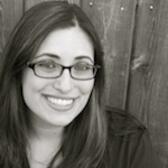"Still Lives" and the women of the 23 Souls
In early September of 1654, 355 years ago today, a group of Brazilian Jews described in the public records as "23 souls, big as well as little," arrived on the docks of the new world Dutch colony of New Amsterdam, now known as New York. These were not the first Jews to reach North America, but the group is significant because it was mostly women and children, signaling the beginning of the first Jewish community in the New World.
Not much is known about the women who arrived in New Amsterdam except for the fact that there were more women than men aboard their ship, the St. Catherine. In 2004-2005 the Jewish Women's Archive celebrated the 350th anniversary of this first Jewish community, determined to ensure that women's stories would play a prominent role in the historical narratives that emerged during the national Anniversary celebrations.
This year, artist Susan C. Dessel has taken on the mission of remembering the women of the original Jewish American community with her exhibit "Still Lives." In her exhibit, Dessell claims to "give voice to these women and their decendents," referred to as merely "wife of" or "daughter of" on their tombstones. Dessel writes, "because women and women's efforts and contributions have been left out of the retelling of our story so often it was very important to me to name each women and girl." Through research, Dessel claims to have named 215 women from the community founded by the original "23 souls" and has incorporated their names in her multi-media installation.
In 2004 Karla Goldman, former JWA Historian in Residence, wrote:
As we contemplate the 350th anniversary of the arrival of those 23 children, women, and men, we must pay careful attention to the stories about these beginnings and the 350 years that have followed. Unless we take full measure of the ways that Jewish women have shaped both Jewish community and American society at large, the 350th commemorations will leave us with impoverished notions of whom we have been and whom we might become… far too often, the story of American Jewish experience is still told with little reference to women's lives.
Dessel's exhibit furthers the mission to uncover and transmit this important piece of American Jewish women's history. Her exhibit will be on display at New York City's Henry Street Settlement from Oct. 1 - Nov. 7th.







Now this is a bit of history that is not taught in American high schools. In fact, it isn't taught in any American school. This is an interesting piece of history that all should learn about. casino
SusanÌâå«s exhibition is important and I hope to help take it to Recife, the city on the northeast coast of Brazil where the first Settellers in New Amsterdam originated.
The first jews here came with the initial Portuguese colonisers as New Cristians in the early 16th Century. They lived side by side with the Portuguese in the historic city of Olinda (close to Recife), now a well preserved UNESCO World Heritage City. These jews had the money and the know how to develop Engenhos to refine sugar, so were important to the Portuguese, but as New Christians they had to keep their religious idindity secret until the Dutch invasion, a period of time that saw the building of the street of the Jews and the first synagogue in the Americas.
The synagogue, the sugar mills and many of the houses the jews occupied in Olinda still stand. They will be the focus of tours I am developing for my travel guides. You can read more detailson my site.
Hi! They might have split up or they might have capsizedThey may have broke deep and took waterAnd all that remains is the faces and the namesOf the wives and the sons and the daughters. Gordon Lightfoot, from The Wreck of the Edmund FitzgeraldA storm on Lake Superior drowned the Edmund Fitzgerald. From the way it